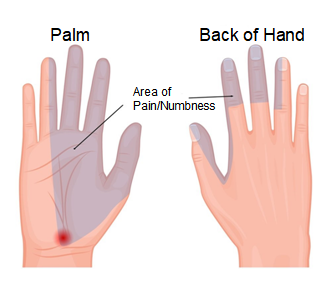Carpal Tunnel Syndrome
This post is also available in: 中文
Troubling tingling fingers
Ms.M, aged 40, consulted for right shoulder stretching and dull pain, and for recent 2 months she had tingling feeling over right thumb and index finger especially after working. After clinical examination, neck seems not clinically related to her hand symptoms. Wrist examination revealed wrist/hand border had significant soreness and compression over there reproduced usual tingling. Compared to left hand, right thumb and wrist region is significantly tighter on palpation. She works as a beautician and frequent pinching and clipping actions are needed. Clinical tests such as tinel sign and phalen test are positive, implying she is likely to suffer from Carpal Tunnel Syndrome. This syndrome is common in jobs requiring repetitive wrist/hand movements e.g. computer users and mechanics.
Situated at the base of wrist, the carpal tunnel is formed by a fascia called Flexor Retinaculum, covering the 8 small carpal bones. The tunnel, of limited space, enclose 9 flexor tendons and the Median Nerve. When there is inflammation/swelling at those tendons or the fascia is tightened up, the median nerve may well be irritated and even compressed. Compromising the nerve can cause tingling/numbness over thumb to half of ring finger, and even weakness and muscle atrophy of thumb in severe cases. Common causes include repetitive wrist/hand movements, for example during mouse-using, typing and labour work. All these can contribute to tendon sheath inflammation and even hypertrophy, increasing pressure to the median nerve.
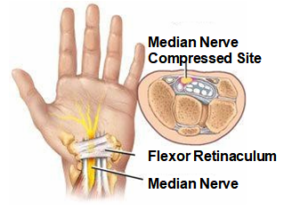
Major symptoms:
- During repetitive hand/wrist movements (e.g. using phone/computer work), tingling/numbness is felt over thumb/ index finger/middle finger and half of ring finger on the palm side. Resting symptoms are possible for more serious patients
- Symptoms may increase during night time and disturb sleep
- In severe cases, fine hand control is hampered along with thumb muscle atrophy.
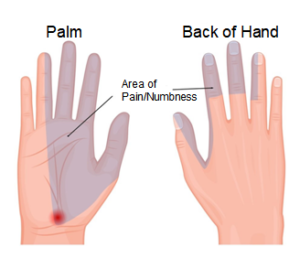
Diagnosis mainly rely on clinical tests e.g. Phalen test, Tinel’s sign, Durkan Test. MRI can be used to reveal any joint/soft tissue impairments. Nerve conduction test is to assist in diagnosis by reflecting how much nerve function is compromised.
Conservative treatments:
- Physiotherapy:corresponding treatments to individual patients: ultrasound therapy, hot/cold pad, electrical stimulation, acupuncture, joint mobilization, stretching and strengthening exercises
- Anti-inflammatory drugs
- Wrist splint to limit movements
- Surgical interventions to be considered if conservative treatments fail
According to her symptoms, we should have some ideas on how to tackle her symptoms
- Ultrasound therapy for inflammation relief
- Acupuncture to release tight fascia and muscle
- Stretching and strengthening exercise (As followed)
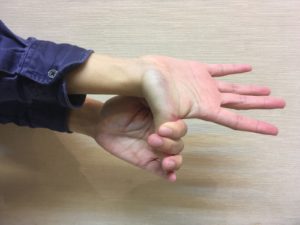
Stretching exercise to wrist flexor muscle

Stretching exercise to thumb muscle
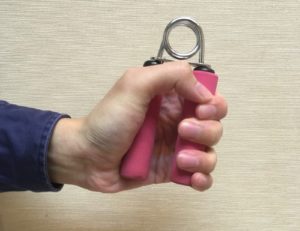
Handgrip strengthening exercise
After few sessions of treatment, her symptoms have gone. Prevention is always better than cure. Therefore we suggest her to take breaks and perform stretching exercises regularly during work. In the long term, progressive strengthening exercises are needed to improve muscle strength and endurance, so as to prevent the muscle from getting tight again, and hence the recurrence.

